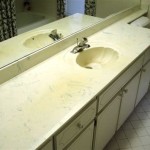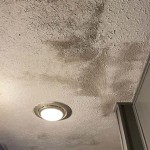Ceramic Bathroom Sink Repair: A Comprehensive Guide
Ceramic bathroom sinks, known for their elegance and durability, can sometimes fall victim to damage, requiring repairs. From minor cracks to chipped edges, understanding how to address these issues can save you time and money. This guide will provide an in-depth look into the process of repairing ceramic bathroom sinks, outlining key steps and considerations to ensure a successful outcome.
Assessing the Damage
The first step in repairing a ceramic bathroom sink is to assess the extent of the damage. This helps determine the appropriate repair method and materials. Begin by examining the affected area for the following:
- Size and Depth of the Crack or Chip: Small, shallow cracks or chips can often be repaired with epoxy resin, while larger or deeper damage may require more extensive techniques.
- Location of the Damage: Damage located in highly visible areas may necessitate more precise and aesthetically pleasing repair methods.
- Presence of Glaze Damage: If the damage extends to the glaze, it may require reglossing after the repair.
Once you have a clear understanding of the damage, you can select the appropriate repair method and gather the necessary materials.
Repairing Minor Cracks and Chips
For minor cracks and chips that do not extend deep into the ceramic, epoxy resin is a common and effective solution. This method involves the following steps:
- Clean the Affected Area: Thoroughly clean the damaged area with soap and water, ensuring it is free of debris, grease, or any other contaminants.
- Apply Epoxy Resin: Mix the epoxy resin according to the manufacturer's instructions and carefully apply it to the crack or chip. Ensure that the resin fully fills the damaged area and smooths out any irregularities.
- Allow to Cure: Let the epoxy resin cure completely as instructed by the manufacturer. This typically takes several hours or overnight.
- Sand and Polish (Optional): Once the resin has cured, you can sand and polish the repaired area to blend it seamlessly with the rest of the sink. This is especially important if the damage was in a visible area.
Epoxy resin is a strong and durable material that can effectively seal cracks and chips, restoring the structural integrity of the sink.
Repairing Deeper Cracks and Chips
For deeper cracks or chips that penetrate the ceramic layer, a more involved repair process is required. These methods typically involve patching and filling the damaged area with materials that closely resemble the original ceramic.
- Clean and Prepare the Area: Thoroughly clean the damaged area, removing loose ceramic fragments and debris. You may need to use a small chisel to remove any remaining loose pieces.
- Apply Patching Material: Apply a patching material, such as a ceramic filler or a two-part epoxy putty, to the damaged area. Ensure the material completely fills the crack or chip and adheres to the surrounding ceramic.
- Shape and Smooth: Once the patching material has set, shape and smooth it to match the contours of the sink. Use a sanding tool or a ceramic file for this step.
- Reglaze (Optional): If the damage extended to the glaze, you may need to reglaze the repaired area to restore the original finish. This requires specialized techniques and may be best left to a professional.
Repairing deeper cracks or chips requires more skill and attention to detail. The success of the repair depends on the quality of the patching material and the accuracy with which it is applied and shaped. If you are unsure about your ability to perform this type of repair, it is best to consult a professional.
Preventing Further Damage
Once a ceramic bathroom sink has been repaired, it is essential to prevent further damage. This can be achieved by following these practices:
- Use a Sink Protector: A sink protector, made of rubber or silicone, can help prevent scratches and chips from occurring due to dropped objects or harsh cleaning tools.
- Avoid Harsh Cleaning Products: Use mild, non-abrasive cleaning products to avoid damaging the glaze on the sink.
- Handle Carefully: Avoid placing heavy objects on the edge of the sink, which can lead to chipping or cracks.
By following these precautions, you can extend the lifespan of your ceramic bathroom sink and maintain its aesthetic appeal.

How To Patch A Porcelain Sink Himg Surface Repair

Gorgeous Shiny Things How To Repair A Porcelain Sink

Sink Repair Happy Tubs Bathtub

How To Fix A Ed Porcelain Sink 8 Steps Prudent Reviews

Ceramic Porcelain Sink Repair True Value

How To Repair A Hairline In Porcelain Sink 6 Steps

Ceramic Porcelain Sink Repair True Value

How To Fix A Ed Porcelain Sink Hometalk

How To Repair A Hairline In Porcelain Sink 6 Simple Steps Follow

How To Fix A Ed Porcelain Sink 8 Steps Prudent Reviews
Related Posts







